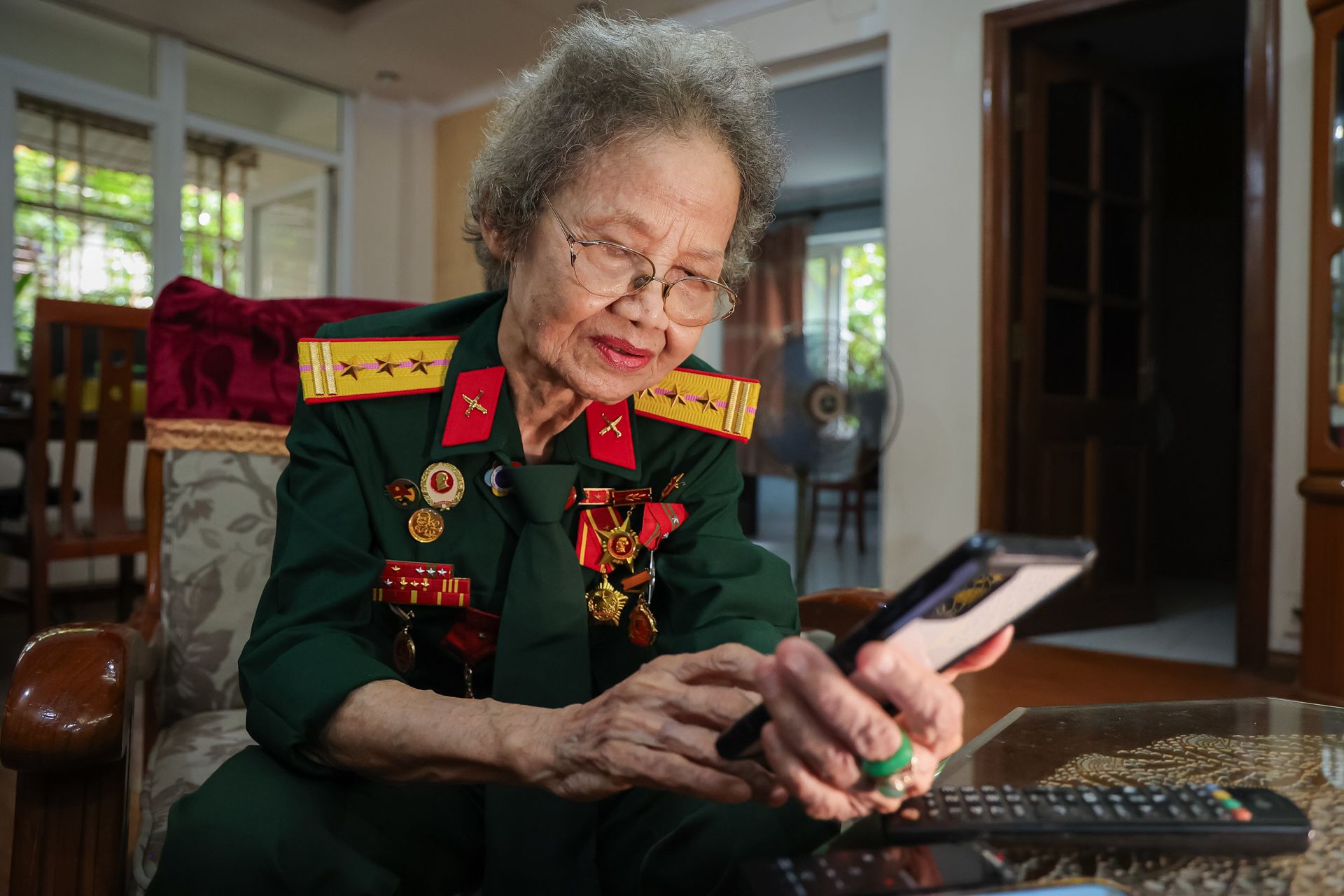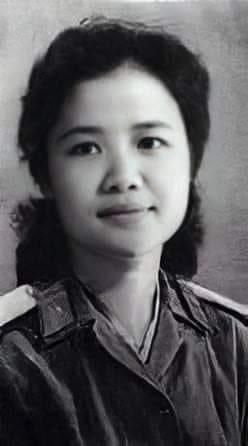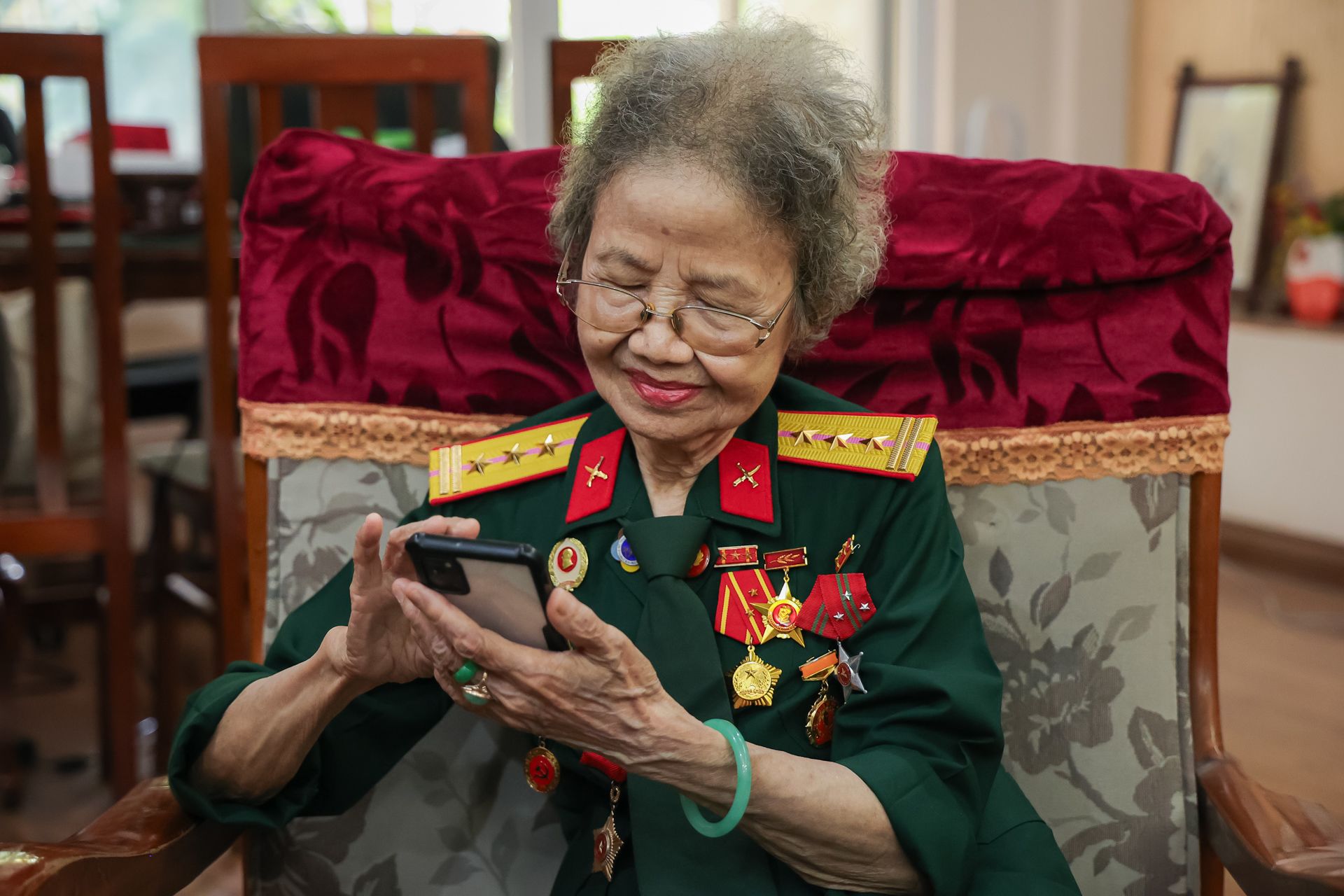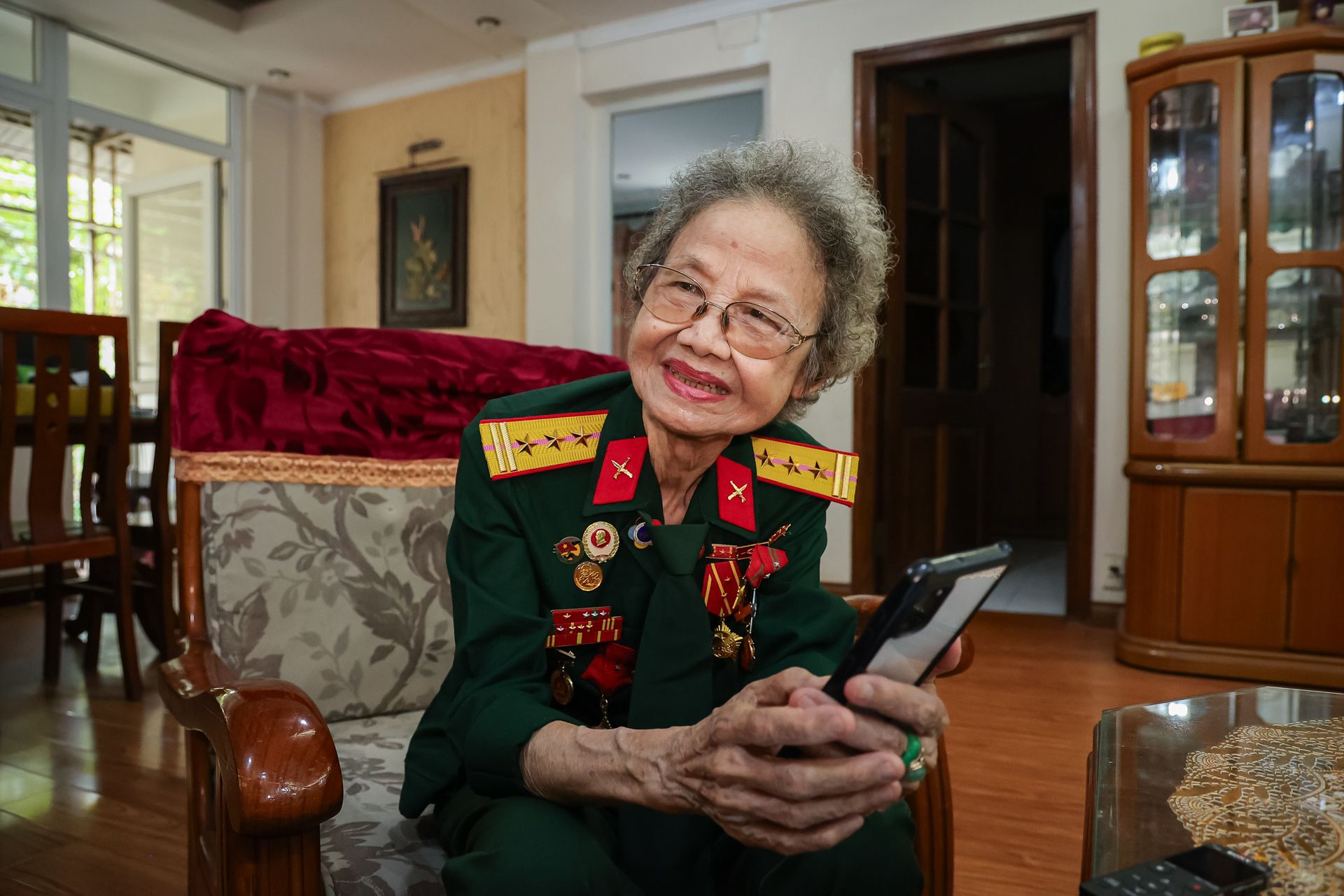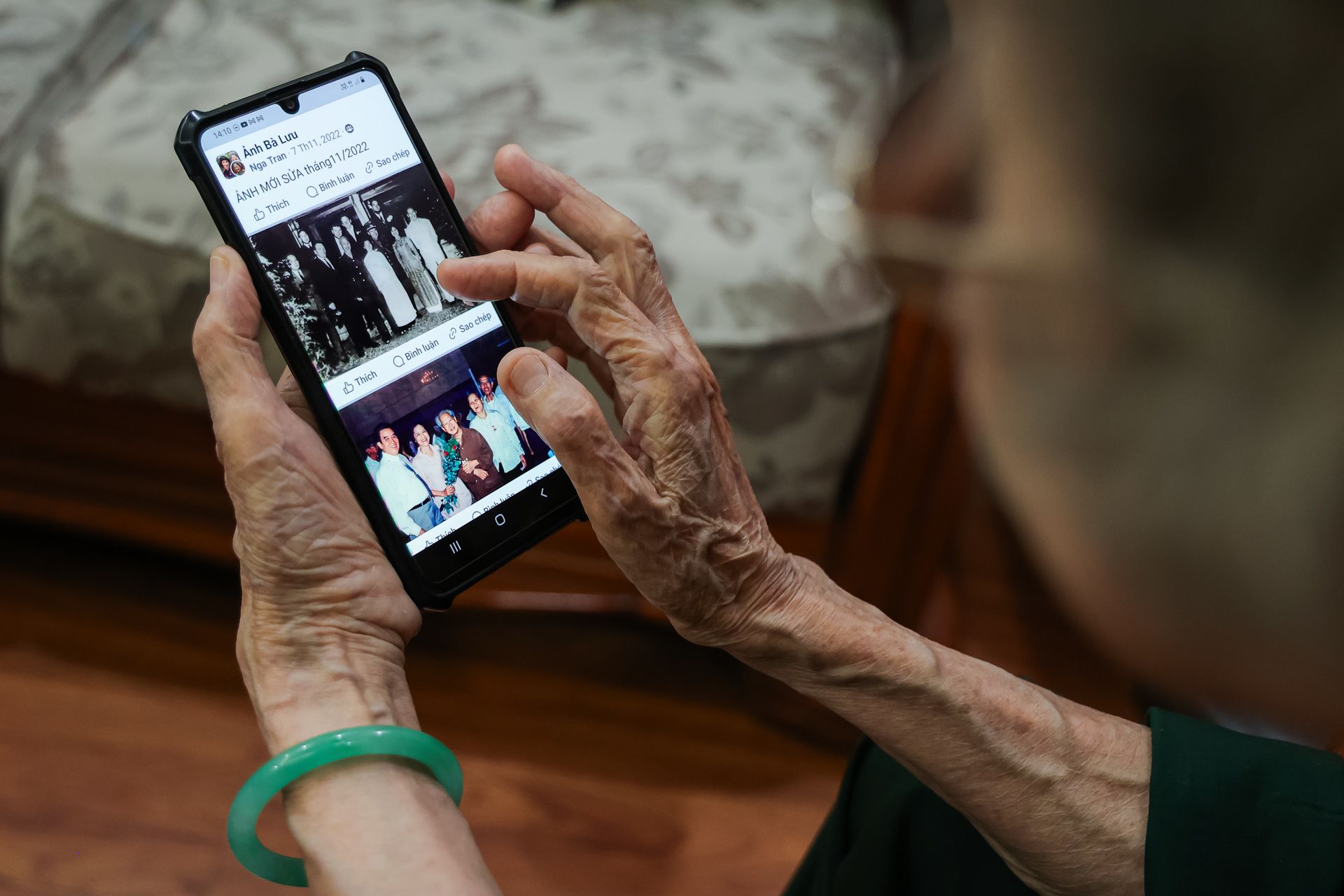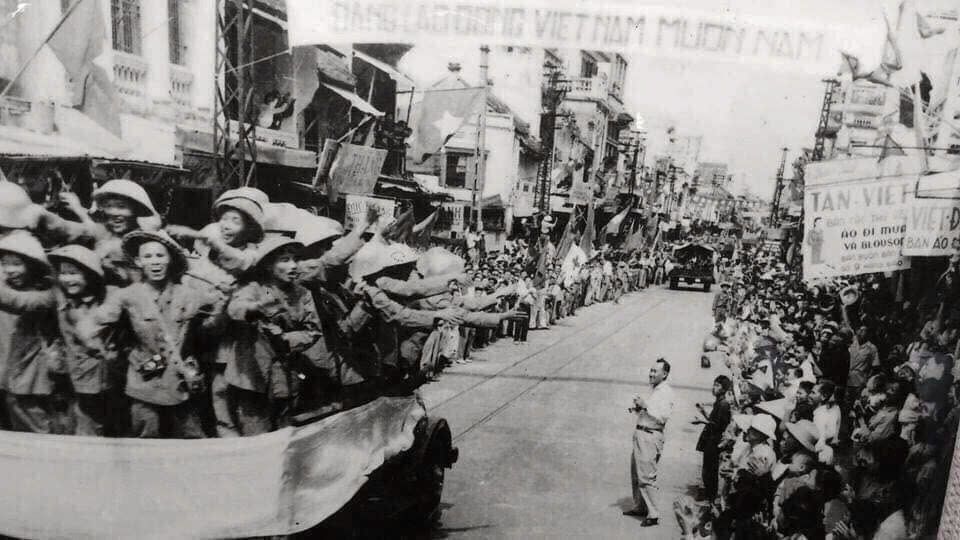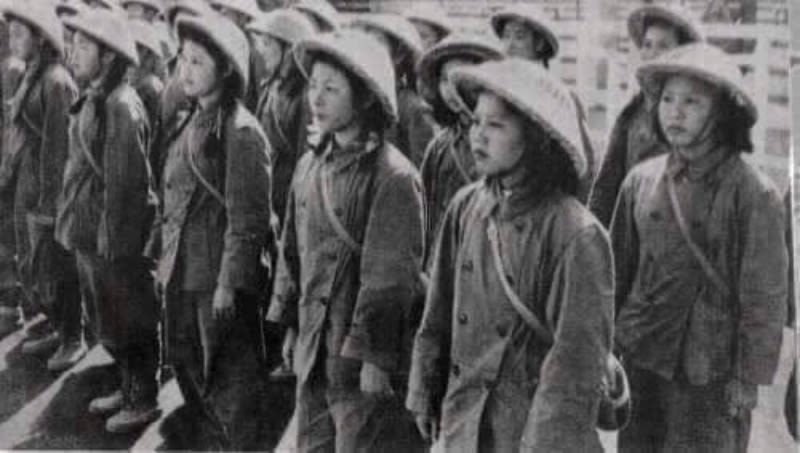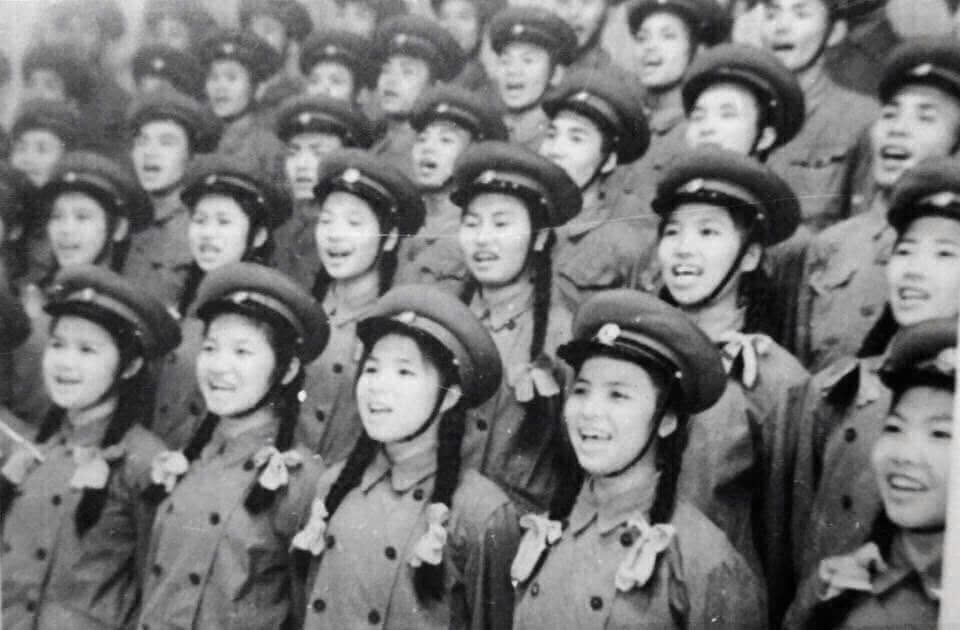A 16-year-old singer’s melody of joy on the day of assuming control of Hanoi

“The first act we performed for the capital city’s residents at the Opera House was the song “Dien Bien Phu Victory” by Do Nhuan with a chorus of over 50 people,” recalled Colonel Tran Thi Nga, former singer of the art troupe of the General Department of Politics. Her eyes bright with joy, she sang “In the middle of the blooming flower season, the northwest region is filled with joy…”
Seventy years ago on the historic October 10, with a radiant smile, Tran Thi Nga — then a 16-year-old girl whose original homeland was Hai Duong — and others in the art troupe of the General Department of Politics waved flags and flowers cheerfully on a truck towards the capital city.
Tran Thi Nga spent her youth performing on the frontline during the 1950s, from the site of the Dien Bien Phu Campaign to the capital of Hanoi. Her songs not only bolstered the morale of her fellow combatants but also helped many wounded soldiers overcome physical pain during their convalescence. For Nga, memories about the period 70 years ago seem like just yesterday, filled with great nostalgia.
In 1952, as a little girl, Tran Thi Nga left her family in Bac Giang to join the art troupe of the General Department of Politics. She was one of the four selected by songwriter Do Nhuan. At that time, she was only 14.
On the first day in the art troupe, she was bewildered because life was strikingly different. During the day, she and her fellows were taught military manners and learned how to sing, dance and act. In the evening, she and her fellows performed at various units. The singing voices and vitality of the young female singers helped raise the morale for soldiers on the frontline and soothe the hardships and pains, both physical and mental.
At the end of 1953, the art troupe received the mission to attack Dien Bien. Only 2 female artists were selected, including Tran Thi Nga. During the entire journey, the troupe practiced their performances during the day and marched at dusk. They kept going, only seeing mountains and forests, and enemy planes bombing day and night. Like the army units, the art troupe also wondered where they were going. At this time, an officer said: “Wherever there is an enemy in our lives, we will go.” Hearing that, everyone was eager to set off. Every day, looking at her comrades and the soldiers who were always full of enthusiasm, she said, the whole troupe did not know fear or sadness.
Upon Dien Bien, the art troupe stayed outside Muong Phang. Every night, they brought songs and songs to serve the soldiers, labourers, and artillery. Before the first important battle — the battle of Him Lam — the unit sent 3 male artists to the campaign to encourage the soldiers' spirit.
At the Dien Bien Phu front, the task of the General Political Department's Art Troupe was to perform art to encourage the soldiers' spirit. On the fierce battlefield, the troupe was divided into groups to serve the companies and platoons right in the trenches. When our soldiers returned from guarding the posts, digging trenches, and fighting the enemy, the artists performed for them. Hearing the applause, seeing the smiles and sparkling eyes of the soldiers after hours of fighting, everyone was extremely happy.
Nga said that in those days, the art troupe performed in rotation from one unit to another. One day, after performing for an artillery team, the next day when they returned, the entire battery had been lost. “The loss was so great, everyone felt sorry for us. We went to the burial place of our comrades, using wildflowers instead of incense to pay our respects,” Nga recalled with tears in her eyes.
Later, the situation became increasingly tense as the fighting was fierce. The superiors ordered the artists to stop performing. Everyone turned to carry out the task of building a ten km-long road around the route to the command post in Muong Phang. General Vo Nguyen Giap was very interested in the art troupe during this time in Muong Phang.
She smiled as she recalled the troupe's Xoe Thai dance performance. That day, the troupe only had three women and was missing one woman wearing a Thai costume, so a male artist had to disguise himself. At the end of the performance, the General came out to praise him, patted his shoulder and asked, "Why are you dressed like this?" The artist smiled and replied, "Yes, the unit was female, so I dressed up like that.". According to Nga, makeup and costumes were very scarce at that time. We got makeup and costumes mainly from defeating enemy posts, among the spoils of war, clothes and women's belongings were sent to the art department.
Once at the Command Headquarters to perform, General Vo Nguyen Giap gave musician Do Nhuan the task of composing about Dien Bien.
Not long after that, the song Giai phong Dien Bien’ (Liberation of Dien Bien) was born. Musician Do Nhuan taught it to the art troupe.
During the intense campaign, wounded soldiers lost a lot of blood and lacked medicine for treatment, and the art department had the task of serving the injured soldiers in the caves. In addition to caring for the wounded soldiers, the art department also did the laundry and cooked for the soldiers. In the caves, urgent surgeries were performed, and without painkillers, many soldiers had to try to suppress the pain. At this time, the art department talked and sang as a painkiller to soothe the wounds of their comrades.
Our art troupe’s vehicle is now entering Hang Dao Street, continuing on to Hang Ngang, Hang Duong, and Dong Xuan Market... Oh! I cannot express the emotional excitement in my heart about the landmarks of the beloved capital...
From left to right: actors: Ngoc Thanh – Tran Nga – Musician Van Chung – Me Dien
From left to right: actors: Ngoc Thanh – Tran Nga – Musician Van Chung – Me Dien
On the afternoon of May 7, while everyone was working to construct the last section of a road, they heard a loud shout from a soldier cycling towards them: “My comrades, the enemy has surrendered! Dien Bien is liberated, my comrades!”. At that moment, everyone burst into happiness, hugging and cheering.
“Our art troupe’s vehicle is now entering Hang Dao Street, continuing on to Hang Ngang, Hang Duong, and Dong Xuan Market... Oh! I cannot express the emotional excitement in my heart about the landmarks of the beloved capital...” she exclaimed as she saw the beautiful capital, although it had somewhat scarred by war.
Amidst the victory of the Dien Bien Phu campaign and the joy of the signing of the Geneva Agreement, the art troupe marched from Dien Bien to Thai Nguyen. Tran Thi Nga and the art troupe members met Uncle Ho for the first time. “We stood on the stage wings, engrossed in watching Uncle Ho working. We were so captivated that we forgot the show time”, Nga recalled. At that time, the troupe’s performance of the song ‘Chien Thang Dien Bien’ (Dien Bien Victory) received big applause from the audience. The art troupe members also heard news on the day of assuming control of Hanoi.
The journey returning to the capital made the art troupe members feel like music in their ears. On the evening of October 9, the art troupe of the General Department of Politics was allowed to spend the night at the Citadel on Hoang Dieu Street. “We couldn't sleep all night, anxiously waiting for the morning. I can't describe the happiness at that moment,” Nga smiled happily.
Before returning to the capital, the art troupe participated in the National Army Art Festival. The art troupe was divided into three groups: Group 1 returned to the capital, Group 2 headed to Nam Dinh City, and Group 3 was assigned to welcome the southern soldiers who marched to the north. Nga was in Group 1 and was allowed to attend the day of assuming control of Hanoi on October 10.
Time was tight, and they had to travel by road, Group 1 had to take time to practice while marching. On the evening of October 9, the troupe arrived in Hanoi and was allowed to take a car straight to the citadel. “On October 9, the day of assuming control of Hanoi was still a secret, so the car was covered. When I got to Dien Bien Phu Street, I saw a barbershop. It was the first time I saw such beautiful neon lights,” Nga said.
Before returning to take over the capital, the art troupe was strictly instructed not to touch even a needle or thread belonging to the people. Her parents also returned to the capital from the liberated zone at that time and gave her four rolls of wool, but she did not dare to accept them or take photos.
At exactly 8am on October 10, 1954, the army departed from the west from Quan Ngua (now Quan Ngua Sports Complex) towards the capital. They were infantry soldiers of the Capital Regiment, led by Regiment Commander - Army Hero Nguyen Quoc Tri. The troupe passed through the streets of Kim Ma, Nguyen Thai Hoc, Cua Nam, and Hang Bong.
At exactly 3:00 pm on October 10, 1954, the city theatre’s siren sounded a long blast. The military band under the command of Conductor Dinh Ngoc Lien played the National Anthem and the national flag was slowly raised to the rhythm of the march. After nine years, the red flag with a yellow star — the national flag — fluttered on top of the “Hanoi Flagpole”.
The first performance of the General Political Department’s art troupe introduced to the people of Hanoi at the city theatre was a chorus of over 50 people with the song “Dien Bien Victory” by musician Do Nhuan.
Female artists from the General Political Department’s art troupe during the flag-raising ceremony.
Female artists from the General Political Department’s art troupe during the flag-raising ceremony.
She recalled emotionally: "To reach the performance venue, we marched on foot, wearing brand new military uniforms from head to toe and shiny black leather shoes. We marched and sang military songs along the road from Lieu Giai Church (now La Thanh Hotel) through the streets of Doi Can, Le Hong Phong, Dien Bien Phu, Cua Nam, Trang Thi, and Trang Tien to the Opera House. The people on both sides of the streets rushed out to cheer us on with joy and encouragement, filling us with great pride and excitement... Even though afterward, almost all of us had blisters on our feet, some even bleeding, we still performed with smiles on stage, forgetting all the fatigue."
Songs like ‘Giai phong Dien Bien’ (Liberation of Dien Bien) and ‘Ho keo phao” (Chant of the Artillerymen) were sung repeatedly on many stages. In addition to performing for the leaders and delegations, the art troupe also performed at Hoan Kiem Lake and other public places to serve the people.
The choir consisting of over 50 people perform the song “Chien thang Dien Bien (Dien Bien Victory) by composer Do Nhuan.
The choir consisting of over 50 people perform the song “Chien thang Dien Bien (Dien Bien Victory) by composer Do Nhuan.
In a conversation on an autumn afternoon in Hanoi, Tran Thi Nga shared that her greatest happiness was her meeting with Uncle Ho and General Giap, and her chance to sing for Uncle Ho and international delegations visiting Vietnam. During the time Uncle Ho stayed at the Presidential Palace, she, along with singers Tuong Vy and Linh Nham, often went to the President Ho Chi Minh Relic Site to perform on holidays. Sometimes they would read books or articles for Uncle Ho to listen to.
At 87 years old, Tran Thi Nga still retains the grace of her youth, with a clear and melodious voice. Throughout the conversation in her small attic room on Ton That Thiep Street, she beamed with joy. Many from the art troupe of those days have passed away. The remaining few occasionally meet at certain events, but the spirit of joyous singing and the happiness from those early days of taking over the capital remain beautiful and vibrant memories in the life of this female artist.
Production manager: Nam Dong
Content: Truong Ngoc
Design: Diec Duong
Photo: Ha Nam and documents
